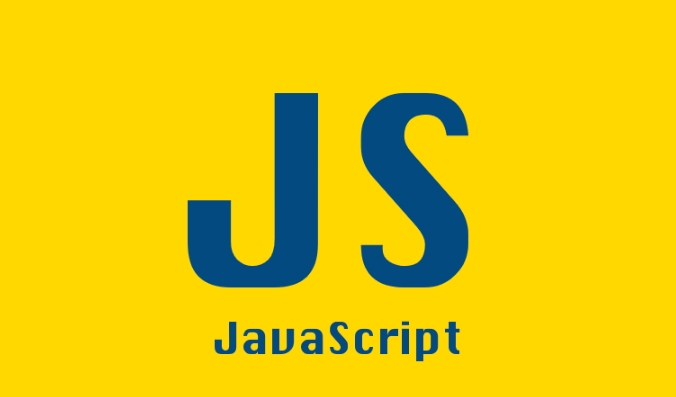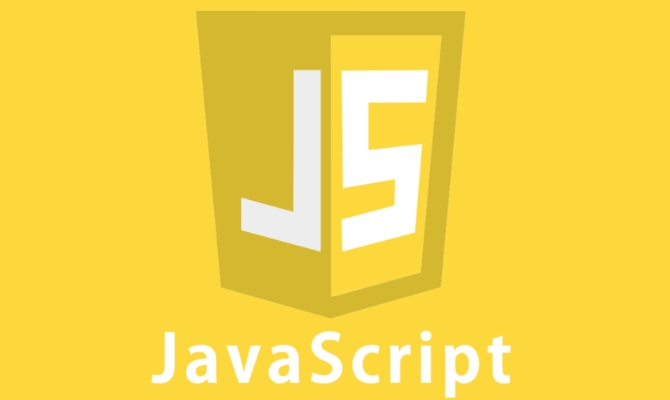Micro Frontends Architecture: A Practical Implementation Guide
Micro frontends solve scaling challenges in large teams by enabling independent development and deployment. 1) Choose an integration strategy: use Module Federation in Webpack 5 for runtime loading and true independence, build-time integration for simple setups, or iframes/web components for strong isolation. 2) Define team boundaries by business domains, with each team owning a micro frontend’s stack, CI/CD, and deployment. 3) Address cross-cutting concerns: share dependencies via Module Federation’s singleton setting, enforce a shared design system, centralize top-level routing in the host app, and communicate via custom events or URLs instead of global state. 4) Implement independent DevOps: each team manages their repo, pipeline, and monitoring, while the host monitors remote health and provides fallbacks for failures. 5) Adopt incrementally by extracting a well-contained page into a standalone micro frontend and integrating it via Module Federation, then repeat. This approach balances autonomy with consistency, making scalable frontend development practical for large organizations.

Micro Frontends are not just a buzzword—they’re a practical solution to scaling frontend development in large teams. The idea is simple: break a monolithic frontend into smaller, independently deployable pieces, each owned by a distinct team. But how do you actually implement this without creating chaos? Let’s walk through a real-world approach.

What Problem Are We Solving?
Before jumping into code, understand the pain points:
- Slow builds and deployments across large apps.
- Team bottlenecks when multiple teams work on the same codebase.
- Tech stack lock-in, where upgrading or experimenting is risky.
- Release coupling, where one team’s bug delays everyone.
Micro frontends help by enabling team autonomy, independent deployments, and technology diversity.

Step 1: Choose Your Integration Strategy
There’s no one-size-fits-all. Here are the most practical options:
Option A: Build-Time Integration (Simple but Limited)
Each micro frontend is built separately and then combined into a shell app at deploy time.

- ✅ Easy to set up with existing tooling.
- ❌ Teams still share a deployment pipeline.
- ❌ No true independence.
Best for: small-scale apps or teams transitioning from monoliths.
Option B: Runtime Integration via Module Federation (Webpack 5)
This is the game-changer. Webpack 5’s Module Federation lets you load JavaScript from one app into another at runtime.
// In the host (container) app
new ModuleFederationPlugin({
name: "container",
remotes: {
dashboard: "dashboard@https://dashboard-app.com/remoteEntry.js",
profile: "profile@https://profile-app.com/remoteEntry.js",
},
shared: ["react", "react-dom"],
});// In the remote (micro frontend) app
new ModuleFederationPlugin({
name: "dashboard",
filename: "remoteEntry.js",
exposes: {
"./Dashboard": "./src/components/Dashboard",
},
shared: ["react", "react-dom"],
});Now, the host can dynamically load components:
import { lazy, Suspense } from "react";
const Dashboard = lazy(() => import("dashboard/Dashboard"));
function App() {
return (
<Suspense fallback="Loading...">
<Dashboard />
</Suspense>
);
}✅ True independence
✅ Different tech stacks (as long as they expose modules)
✅ Independent deployments
Use this if you're using Webpack 5 and want flexibility.
Option C: Iframe or Web Components (Isolation-First)
When you need strong isolation (e.g., security, legacy systems):
- Iframes: Full sandboxing but poor UX (scrolling, styling, communication).
- Web Components: Native browser support, framework-agnostic, but need polyfills and custom event handling.
Best for: high-security environments or integrating non-JS apps.
Step 2: Define Clear Team Boundaries
Ownership matters. Each micro frontend should map to a business domain, not a UI component.
Examples:
orders@https://orders.company.comuser-profile@https://profile.company.comanalytics@https://analytics.company.com
Each team:
- Chooses their stack (React, Vue, Angular, etc.)
- Owns their CI/CD pipeline
- Publishes their
remoteEntry.jsendpoint
Avoid overlap. No two teams should own parts of the same page unless clearly decoupled.
Step 3: Solve Cross-Cutting Concerns
Even when apps are split, users expect a seamless experience.
1. Shared Dependencies
Use shared in Module Federation to avoid duplicate React, Lodash, etc.
shared: {
react: { singleton: true, eager: true },
"react-dom": { singleton: true, eager: true },
}singleton: true ensures only one version loads—critical for React context and hooks.
2. Global Styles and Design System
Don’t let each team redefine buttons.
- Host app provides base CSS (fonts, resets, tokens).
- Publish a shared design system package (e.g.,
@company/ui) via npm or CDN. - Enforce usage via linting or PR reviews.
3. Routing
The host app should control routing.
// Container App
<Route path="/dashboard" element={<Dashboard />} />
<Route path="/profile" element={<Profile />} />Each micro frontend handles its internal routes (e.g., /profile/settings), but the shell manages top-level navigation.
4. State and Communication
Avoid shared global state. Instead:
- Use URLs and query params to pass data.
- Use custom events for lightweight communication:
// From micro frontend
window.dispatchEvent(new CustomEvent("user-login", { detail: user }));
// In host or another app
window.addEventListener("user-login", (e) => console.log(e.detail));For complex cases, consider a lightweight message bus or context passed via props.
Step 4: DevOps & Observability
Independent apps mean independent pipelines.
✅ Each team has:
- Their own repo
- CI/CD (GitHub Actions, Jenkins, etc.)
- Staging environment
- Monitoring (Sentry, LogRocket, etc.)
✅ Host app monitors:
- Health of remote entries
- Fallback UIs if a micro frontend fails to load
Example error boundary:
class RemoteFallback extends React.Component {
state = { hasError: false };
static getDerivedStateFromError() {
return { hasError: true };
}
render() {
if (this.state.hasError) {
return <div>Dashboard is temporarily unavailable.</div>;
}
return this.props.children;
}
}Step 5: Incremental Adoption
You don’t need to rewrite everything.
Start by:
- Identifying a well-contained page (e.g., “Settings” or “Reports”).
- Extracting it into a standalone app with Module Federation.
- Loading it into the main app as a remote.
- Repeat.
This way, you prove value early and reduce risk.
Final Thoughts
Micro frontends aren’t free. You trade simplicity for scalability.
They make sense when:
- You have multiple teams
- You deploy often
- You want to experiment with tech stacks
- Your frontend has become a bottleneck
But if you’re a small team, a well-structured monolith might still be better.
With Webpack 5’s Module Federation, the tooling is now mature enough to make micro frontends practical—not just theoretical.
Basically: start small, standardize interfaces, and automate everything.
The above is the detailed content of Micro Frontends Architecture: A Practical Implementation Guide. For more information, please follow other related articles on the PHP Chinese website!

Hot AI Tools

Undress AI Tool
Undress images for free

Undresser.AI Undress
AI-powered app for creating realistic nude photos

AI Clothes Remover
Online AI tool for removing clothes from photos.

Clothoff.io
AI clothes remover

Video Face Swap
Swap faces in any video effortlessly with our completely free AI face swap tool!

Hot Article

Hot Tools

Notepad++7.3.1
Easy-to-use and free code editor

SublimeText3 Chinese version
Chinese version, very easy to use

Zend Studio 13.0.1
Powerful PHP integrated development environment

Dreamweaver CS6
Visual web development tools

SublimeText3 Mac version
God-level code editing software (SublimeText3)
 Advanced Conditional Types in TypeScript
Aug 04, 2025 am 06:32 AM
Advanced Conditional Types in TypeScript
Aug 04, 2025 am 06:32 AM
TypeScript's advanced condition types implement logical judgment between types through TextendsU?X:Y syntax. Its core capabilities are reflected in the distributed condition types, infer type inference and the construction of complex type tools. 1. The conditional type is distributed in the bare type parameters and can automatically split the joint type, such as ToArray to obtain string[]|number[]. 2. Use distribution to build filtering and extraction tools: Exclude excludes types through TextendsU?never:T, Extract extracts commonalities through TextendsU?T:Never, and NonNullable filters null/undefined. 3
 Micro Frontends Architecture: A Practical Implementation Guide
Aug 02, 2025 am 08:01 AM
Micro Frontends Architecture: A Practical Implementation Guide
Aug 02, 2025 am 08:01 AM
Microfrontendssolvescalingchallengesinlargeteamsbyenablingindependentdevelopmentanddeployment.1)Chooseanintegrationstrategy:useModuleFederationinWebpack5forruntimeloadingandtrueindependence,build-timeintegrationforsimplesetups,oriframes/webcomponents
 How to find the length of an array in JavaScript?
Jul 26, 2025 am 07:52 AM
How to find the length of an array in JavaScript?
Jul 26, 2025 am 07:52 AM
To get the length of a JavaScript array, you can use the built-in length property. 1. Use the .length attribute to return the number of elements in the array, such as constfruits=['apple','banana','orange'];console.log(fruits.length);//Output: 3; 2. This attribute is suitable for arrays containing any type of data such as strings, numbers, objects, or arrays; 3. The length attribute will be automatically updated, and its value will change accordingly when elements are added or deleted; 4. It returns a zero-based count, and the length of the empty array is 0; 5. The length attribute can be manually modified to truncate or extend the array,
 What are the differences between var, let, and const in JavaScript?
Aug 02, 2025 pm 01:30 PM
What are the differences between var, let, and const in JavaScript?
Aug 02, 2025 pm 01:30 PM
varisfunction-scoped,canbereassigned,hoistedwithundefined,andattachedtotheglobalwindowobject;2.letandconstareblock-scoped,withletallowingreassignmentandconstnotallowingit,thoughconstobjectscanhavemutableproperties;3.letandconstarehoistedbutnotinitial
 Understanding JavaScript's Proxy and Reflect APIs
Jul 26, 2025 am 07:55 AM
Understanding JavaScript's Proxy and Reflect APIs
Jul 26, 2025 am 07:55 AM
Proxy and Reflect API are powerful tools used in JavaScript to intercept and customize object operations; 1. Proxy blocks operations such as get, set by wrapping target objects and defining "traps", and implements functions such as logs, verification, read-only control; 2. Reflect provides methods corresponding to Proxy traps to ensure the consistency and correctness of default behaviors and improve code maintainability; 3. Practical applications include Vue3 responsive system, data verification, debug logs, immutable objects and API simulation; 4. Pay attention to performance overhead, complex behavior of built-in objects, this binding problems, and nested objects need to be recursively proxyed; 5. Reasonable use can build efficient, debugable, and reactive
 Generate Solved Double Chocolate Puzzles: A Guide to Data Structures and Algorithms
Aug 05, 2025 am 08:30 AM
Generate Solved Double Chocolate Puzzles: A Guide to Data Structures and Algorithms
Aug 05, 2025 am 08:30 AM
This article explores in-depth how to automatically generate solveable puzzles for the Double-Choco puzzle game. We will introduce an efficient data structure - a cell object based on a 2D grid that contains boundary information, color, and state. On this basis, we will elaborate on a recursive block recognition algorithm (similar to depth-first search) and how to integrate it into the iterative puzzle generation process to ensure that the generated puzzles meet the rules of the game and are solveable. The article will provide sample code and discuss key considerations and optimization strategies in the generation process.
 What is optional chaining (?.) in JS?
Aug 01, 2025 am 06:18 AM
What is optional chaining (?.) in JS?
Aug 01, 2025 am 06:18 AM
Optionalchaining(?.)inJavaScriptsafelyaccessesnestedpropertiesbyreturningundefinedifanypartofthechainisnullorundefined,preventingruntimeerrors.1.Itallowssafeaccesstodeeplynestedobjectproperties,suchasuser.profile?.settings?.theme.2.Itenablescallingme
 How can you remove a CSS class from a DOM element using JavaScript?
Aug 05, 2025 pm 12:51 PM
How can you remove a CSS class from a DOM element using JavaScript?
Aug 05, 2025 pm 12:51 PM
The most common and recommended method for removing CSS classes from DOM elements using JavaScript is through the remove() method of the classList property. 1. Use element.classList.remove('className') to safely delete a single or multiple classes, and no error will be reported even if the class does not exist; 2. The alternative method is to directly operate the className property and remove the class by string replacement, but it is easy to cause problems due to inaccurate regular matching or improper space processing, so it is not recommended; 3. You can first judge whether the class exists and then delete it through element.classList.contains(), but it is usually not necessary; 4.classList







